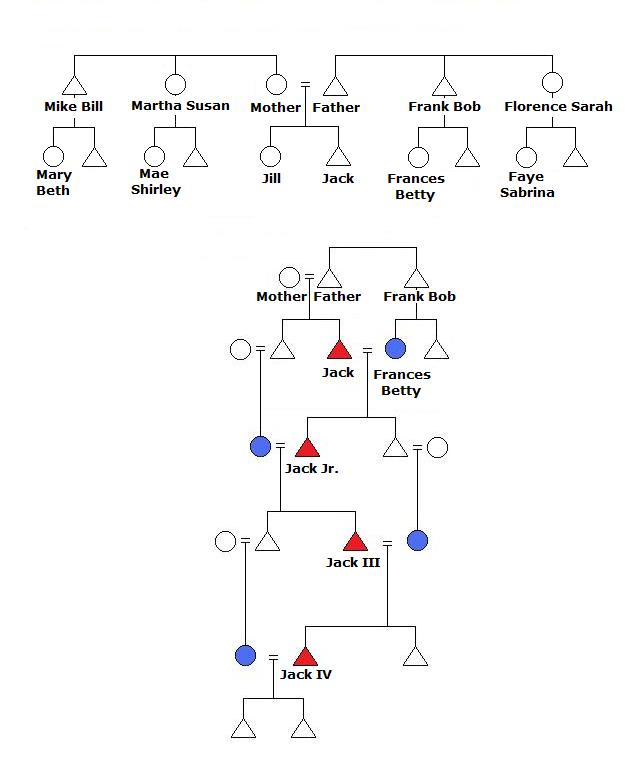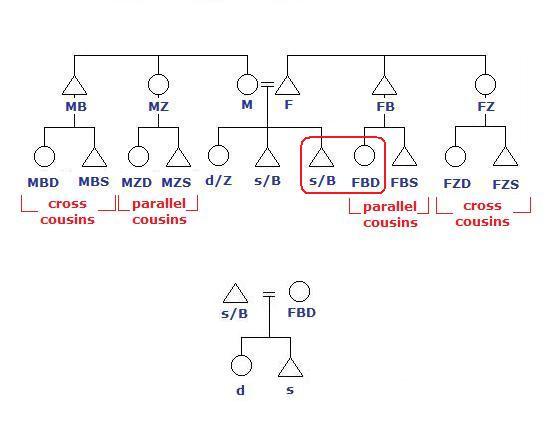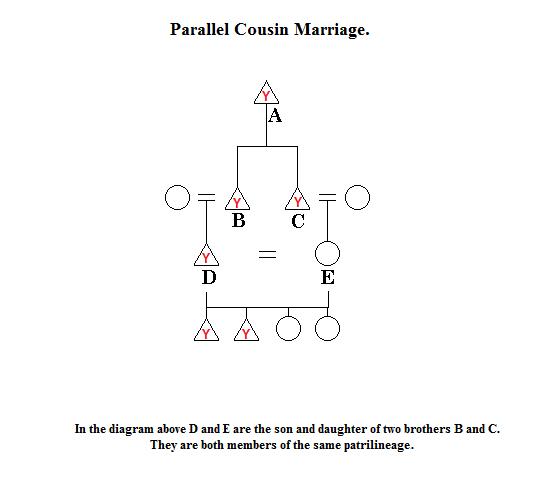here is st. augustine from his The City of God Against the Pagans on outbreeding (and a bit on inbreeding). it’s a little “I’m My Own Grandpa” in places, but augustine’s basic point is that it’s good that people marry out (eg. avoid marrying their close cousins) because in doing so, they increase the number of connections which they have with other individuals — and if everyone in a society does this, there will be larger and broader networks of individuals with common goals and interests, etc., etc., all of which will “bind social life more effectively” and, hopefully, help create the city of god here on earth as much as possible. never mind the possible evolutionary effects.
st. thomas aquinas refers to these passages in his Summa Theologica in his discussion on the merits of outbreeding (but maybe not too much outbreeding!).
source: Augustine: The City of God Against the Pagans, Books 1-13 [pgs. 665-667]:
“16 – That the present law pertaining to marriage between blood-relations could not apply to the men of the earliest times
“After the first marriage of the man made from the dust and his wife, created from the man’s side, the human race had need of the union of males and females in order to multiply itself by begetting offspring. But there were then no other human beings apart from those who had been born of the first two. Therefore, men took their sisters as wives. In ancient times, this was acceptable, because done under the compulsion of necessity; now, however, it is damnable because forbidden by religion. For affection is now given its proper place, so that men, for whom it is beneficial to live together in honourable concord, may be joined to one another by the bonds of diverse relationships: not that one man should combine many relationships in his sole person, but that those relationships should be distributed among individuals, and should thereby bind social life more effectively by involving a greater number of persons in them. Thus, ‘father’ and ‘father-in-law’ are the names of two different relationships; and so the ties of affection extend to a greater number of persons when each has one man as his father and another as his father-in-law. When brothers and sisters were joined together in marriage, however, the one man Adam was compelled to be both father and father-in-law to his sons and daughters. So too, his wife Eve was both mother-in-law and mother to her children of both sexes; whereas if there had been two women, one as mother and the other as mother-in-law, the bond of social affection would have operated more widely. Again, a sister also, because she had become a wife as well, united two relationships in herself, whereas if these had been distributed between two people, one a sister and the other a wife, the number of persons bound together in the closeness of fellowship would have been increased. But this state of affairs could not exist when the only human beings were brothers and sisters, the children of the first human couple. It could exist only when there was a plentiful suppoly of women who could be wives without also being sisters. Then, not only was there no longer any need for brothers and sisters to marry; it also became unlawful for them to do so. For if the grandchildren of the first human beings, who by that time could have taken their cousins as wives, were joined in marriage to their sisters, there would then not have been two relationships united in one person, but three; which relationships should be distributed among different individuals, in order to unite a greater number in the closness of affection. For the marriage of brothers with sister would then have made one man the father, father-in-law and uncle of his own children. By the same token, his wife would be the mother, aunt and mother-in-law of their shared children. And the children themselves would be not only brothers and sisters and spouses to one another, but also cousins, as being the offspring of brothers and sister. If, however, each of these relationships were assigned to a different individual, they would then connect nine people instead of three to each of them. For one man would have one person as his sister, another as his wife, another as his cousin, another as his father, another as his uncle, another as his father-in-law, another as his mother, another as his aunt, and another as his mother-in-law; and so the social bond would extend not merely to a small group, but ever more widely, to connect a large number more closely together.
“We notice also that, as the human race has increased and multiplied, this rule has come to be observed even among the impious worshippers of many false gods. For although their perverse laws may permit brothers and sisters to marry, their actual custom is better, and they prefer to shun the freedom to do this. In the first ages of the human race, it was generally permitted to take a sister in marriage; but this practice is now so much deplored that it is as though it could never have been lawful. For what achieves most in influencing or offending human sensibilities is custom; and, in this case, custom restrains us from immoderate lust, so that men are right when they judge it wicked to disregard or transgress custom. For if it is wicked to pass beyond the boundary of one’s own property out of greed for possession, how much more wicked is it to subvert a moral boundar out of lust for sexual intercourse! We have also found that, for moral reasons, marriages between cousins are rare even in our own times, because, even though such marriages are permitted by law, the degree of kinship involved in them is only one step away from that of brother and sister. Such marriages were not prohibited by divine Law, and they have not yet been forbidden by human law either;[82] but abhorrence was felt for an act which, though lawful, bordered on the unlawful because marriage with a cousin seemed to be almost the same as marriage with a sister. For cousins are called brothers and sisters even among themselves, because of the closeness of their blood relationship, which is almost that of full brothers and sisters.
“To the patriarchs of antiquity, it was a matter of religious duty to ensure that the bonds of kinship should not gradually become so weakened by the succession of the generations that they ceased to be bonds of kinship at all. And so they sought to reinforce such bonds by means of the marriage tie before kinship became too remote, thereby calling kinship back, so to speak, as it fled. Thus, when the world was now full of people, although they did not like to marry sisters with whom they had either a father or a mother or both parents in common, they nonetheless liked to take wives from within their own family. Who would doubt, however, that the state of things at the present time is more virtuous, now that marriage between cousins is prohibited?[83] And this is not only because of the multiplication of kinship bonds just discussed: it is not merely because, if one person cannot stand in a dual relationship when this can be divided between two persons, the number of family ties is thereby increased. In addition, there is present in man a certain sense of honour, which is both natural and laudable, which prompts him not to direct towards a woman whom he is bound to respect and honour as a kinswoman that lust — and lust it is, even though necessary for procreation — which, as we see, occasions shame even within the chastity of marriage.
“[82] Marriage between cousins was, in fact, prohibited by the Emperor Theodosius I (see Ps. – Aurelius Victor, ‘Epitome de caesaribus’, 48; Ambrose, ‘Epist.’ 60,5. This is a fact that Augustine seems to remember in the next paragraph. See also Plutarch, ‘Quaest. Rom.’, 108.
“[83] See n. 82.”
previously: st. augustine and st. thomas aquinas and thomas aquinas on too much outbreeding
(note: comments do not require an email. st. augustine.)

















